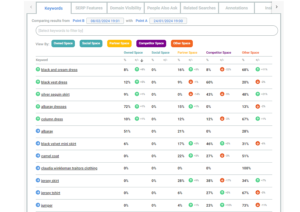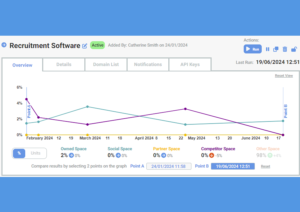There’s still a lot of focus in SEO on securing position one in organic results. But that focus ignores everything else of importance. Why not own the Question Box, a question answer or pay for a shopping slot?
Owning digital real estate on Google page one can be seen as securing prime shelf space in a bustling supermarket. You want your brand to be most prominent, you want your brand to be seen and selected over anyone else’s. When shoppers are seeking answers to questions, undecided what to buy or where from, Google helps them decide. And the placement of your brand in this digital window can significantly impact your success.
1. The Power of Location
In a supermarket or in a digital space, the prime spot catches a shopper’s eye, so securing a top position on a search results page is crucial. It’s akin to being at eye level—the sweet spot where attention converges. But the prime spot or top position on a SERP doesn’t necessarily mean organic position one. The top spot might be a video, an Answer Box, a carousel. So it’s important to stay aware of what’s appearing and where.
2. Beyond Rankings: Share of Space
While ranking matters, share of space is equally critical. Being on the first page of Google results increases your visibility but only being in organic position one isn’t enough. You need to dominate as much of the space as possible, especially because users are often getting answers to their questions in the SERP without having to click on any links.
Owning more space means more opportunities to grow brand awareness. When potential customers consider a purchase, your brand should be front and center. Whether through featured snippets, knowledge panels, or related searches, each piece of digital real estate contributes to your brand’s presence.
Beyond ranking, consider your relevance to the keyword searched and build content to establish your authority for those terms. Appearing in featured snippets or knowledge panels is a real boost to a presence on page one.
Ways to win more share of space
- Craft compelling meta titles, descriptions, and content and aim for featured snippets and knowledge panels. Use tools like SERPsketch to research people also ask questions and winning content your competitors are creating, look at the related searches to make sure you’re covering other interests aligned with your keywords.
- Regularly assess your share of space: SERPsketch helps you clearly understand the differences in your share of space from one moment in time to another. So you can track your visibility over time and make sure that your tactics are gaining you share rather than losing it.
- Quickly understand changes in search algorithms: Imagine the scenario, you drop a bit in conversions for organic traffic even though you’ve been position one for a while. Running your sketch can identify what might have changed on the page one SERP that’s affected your traffic or conversions. Perhaps a feature is taking up a lot of space at the top of the page and pushed your visibility down below the fold. Perhaps a new competitor has entered the market and is aggressively pursuing space on page one.
Your focus for your search marketing should be less about rankings and more about owning the space where consumers make decisions.
Position your brand strategically and create content for the features that Google serves up for each of your most important keywords.




